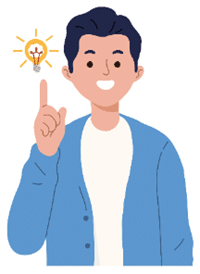Having your website critiqued by a fresh set of eyes can be useful, as we’re so used to seeing our websites that we’re effectively blind to any issues that may be staring visitors in the face.
This first in a series of website teardowns is for the Business of Software Conference. If you’d like to submit your website for review, please bear in mind that this was an unusually gentle critique. Put it down to tiredness.
Transcript of video follows (for readers and spiders).
Note that it’s worth watching the video to really understand the issues raised.
Hi everyone. Today we’re going to do something a little bit different. I’m going to be having a look at the website for the Business of Software Conference. I just got back from the conference five days ago, and as you’re going to see, I rate the conference extremely highly. It’s one of the best software conferences in the world; but the question is, does the website match up? Let’s have a look and see.
There’s a lot happening here.
Okay. When I arrive at the website, it’s very, very busy. What jumps out here … well, in a sense, everything, and everything, when it comes to websites communicating, is effectively nothing. It’s very busy. We’ve got the logo, Best of BOS to your inbox, registration, there’s a countdown. There’s a headline, “Three Days of Peer Learning,” video, headlines, buttons, speakers … yeah, there’s a lot happening here.
There’s also a lot of so-called white space on the sides, although in this case it’s blue space. The content sections are also packed. When it’s this packed, I think it really dilutes the focus.
I’ve only just realized now, actually … the one thing it does doesn’t say … there’s a lot of text here, but it doesn’t actually say it’s a conference. [I realised afterwards that it does – but the point still stands. I initially missed it.] It talks about three days of peer learning for leaders of the world’s best software businesses. It’s got dates. Three days of peer learning sounds like something potentially different from the reality of the conference in a way.
I think this is a problem. I know the event is, as I mentioned, one of the best conferences in the world, but there’s nothing on this page to actually tell me that. If I just happened to click on a link elsewhere and arrive on this page, I’d have no idea what was on offer here.
What resolutions do developers use?
It also looks like the website’s designed for a resolution of … looks like 1,240 x 768, which is a little surprising. You’re primarily targeting software companies, software developers, and most of them are going to have a higher resolution than that on their phones.
My gut instinct, at a guess, is if you going into your analytics data, you’re probably going to see less than 2 or 3% at the most of your visitors, are on such a low resolution, so you’re missing out on all the extra space that you could be putting to better use, not necessarily cramming more information but just spacing things out. Yeah, you’re missing out on that.
Okay, search. Search what? To be honest, a lot of times for a lot of sites, search is there because it can be there, because it’s included in the template. Again, looking at your analytics, I’d be interested to know how many people are actually using it, and I’m guessing not that many. Actually, when someone’s actually arrived because, for instance, there’s a specific talk that they want to see. Do you want them to find it immediately without at least learning a little bit more about what’s on offer?
Black highlighting:
Also, this black border along the top, because the information that’s set on the black background, it’s more or less ignored. There’s a reason why you never see a black highlighter … it’s because you don’t pay attention to anything in black; and, more importantly, it just shoves this content, the real content you want people to look at, it just shoves it down and, in effect, reduces the space that you have without people actually having the scroll down.
Let’s look for some calls to action here. Best of BOS to your inbox. That says very little. Is it a one-time mailing, daily, weekly, monthly? How often? No idea. Register, save your place for BOS 2014. Yeah, that’s better, but again, save your place for what? Right now I’m not too sure. We’ve got the word “conference” there, but aside from that there’s little to suggest that it is actually a conference.
I really like the Business of Software logo [watch the video to see it]. It’s simple, it’s distinctive, it’s recognisable; but just an aside, I’d like to know if there’s a story or plan behind it or what. I almost … but not quite … love the headline. I think it deserves a bit more space, perhaps not being crammed in with everything else. You’ve got too much in too little space. You never see a newspaper headline with this much because they simply don’t work.
Also, the dates contradict each other. You’ve got the 28th to 30th October over here, and now I’m taken to a page for September 15th, 2014. I understand why. I get why that’s happening. You’ve just finished the conference; it only finished five days ago. I do understand that, but you’ve just missed an opportunity, I think, because this is a time of great online noise and chatter about the conference. Probably the last week you’ve seen more chatter about the conference than the rest of the year put together, and this is a really good opportunity to get some great coverage [fpr next year’s conference].
Missed opportunity:
My advice would be that, from the moment the conference starts, the website should already be about next year’s event, the reason being that most people going to the website aren’t the attendees of the conference. They’re too busy getting overwhelmed with phenomenal content. Most of the people that go to the website are people who just heard about the conference and wanted to get an idea of what they’re missing, so you’ve missed a good opportunity, in a way.
I’m quite sure that you, Hermione, and the rest of the rest of the team will love me for already adding to next year’s workload, but there you go.
Great video:
Okay the video: I love it. It does need a bigger play button. Patrick McKenzie often points out that the bigger the play button the better, and he’s got all sort of funky facts and data to back that up.
Actually your video itself, the content is unusually good and well produced; most aren’t. You do also have some very attractive attendees as well. [Please watch the video before judging me].
A lot of links:
The navigation items are a little bit odd though: blog, new speaker schedule, workshops, hotels, etc. I would be interested to see the data on that as well, how well they’re working. Let’s see what else. There’s a lot of links; in fact there are a huge number of links. Let’s just do a quick real-time check … yeah, there’s 69 … so almost 70 links on the page, which is a huge number. The problem is that in effect you’ve brought people to your website, and what you’re doing is effectively giving them 70 different options of where to click next. What you should really be doing is using this main page as an opportunity to streamline and steer them, to separate them into people looking for details of the conference, people who actually want to register, the people who want to watch the videos, the mailing lists, and so on.
It’s hard for me to look at this website objectively because I’m a big, big fan of the conference; but this page needs to tell me why I should attend. Now I’ve spoken to a lot of people at the conference; I know how they speak of it. Why don’t you have testimonials? Are there any testimonials on the main page? Not that I can see. What a missed opportunity. Testimonials are fantastic, and you’re are unbelievably loved and appreciated event. People love this conference, and speak incredibly highly of it. I think that what they say needs to be up on the page as well.
Let’s have a quick look at the other links. Blog on the news. Yeah, it’s good. It’s nice and up to date. There’s lots of content I can already see here, quite a few articles just in the last few weeks, which is brilliant. Click on speakers … fantastic, some nice content. Schedule … it’s already out of date, but that doesn’t matter. It’s great information.
A LOT OF CAPITAL LETTERS:
One thing I’m noticing is a lot of capital letters. I don’t like capital letters. A lot of people feel that they shout; I don’t feel that this website is shouting, but it does make some of the content a little bit harder to read. “Over two and a half days you’ll get the theoretical grounding, practical knowledge, personal context that will help you build long-term, profitable, sustainable software businesses.” Wow! That’s a big sentence, even more so in capital letters.
One other thing. I love the colour scheme of the site. Very nice.
Okay. Very quickly right at the end, I always like to see what’s right at the bottom of the pages. You’ve got a site map; let’s see what’s there. Okay so there’s a sire map… which can’t be found. Interesting. If I go to the main page and I go to the site map, I bet I will actually see a site map. Yep … Oooh, oooh, oooh … this isn’t a site map; this is for Google. Do that as an XML file and don’t subject your visitors to this. This isn’t the most useful or practical thing. It’s kind of like an eye test, but aside from that …
So … the main points: declutter, clarify, space things out, and make sure it’s really clear that this is the website for the world’s greatest software conference.
Unique ideas for your business
The Demystifier puts practical ideas into your hands. You won't find them elsewhere. Original, actionable and insanely effective.



